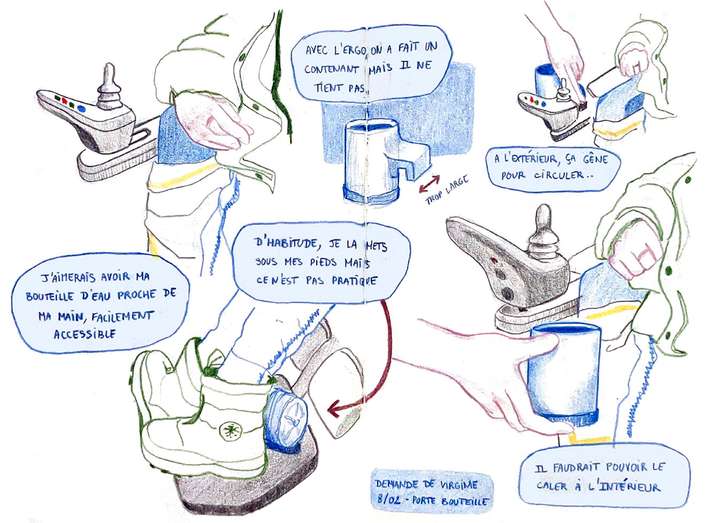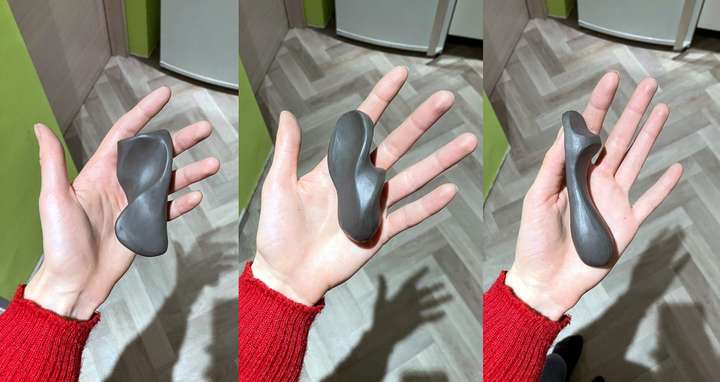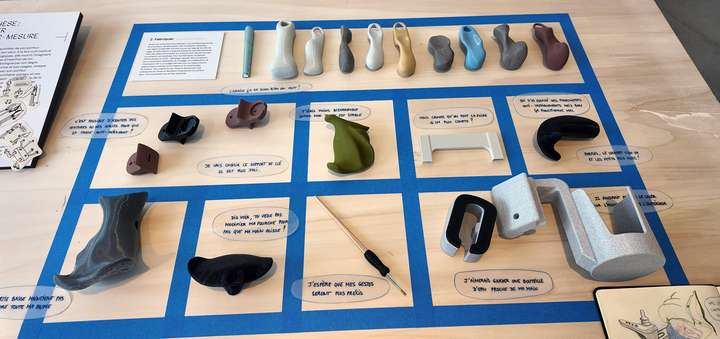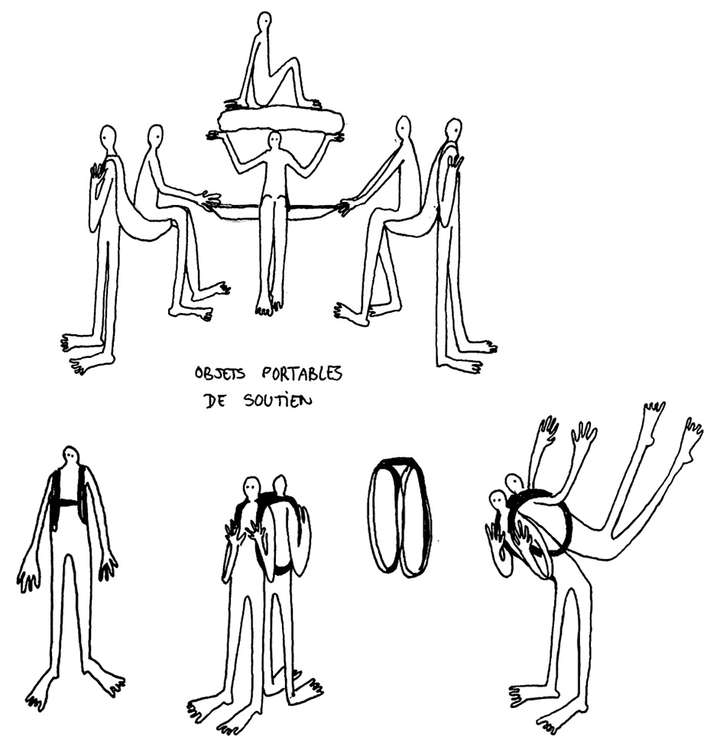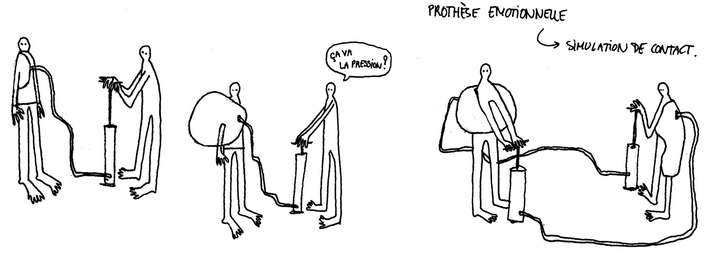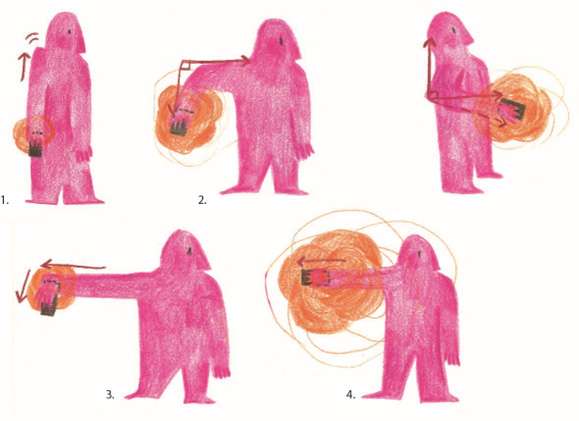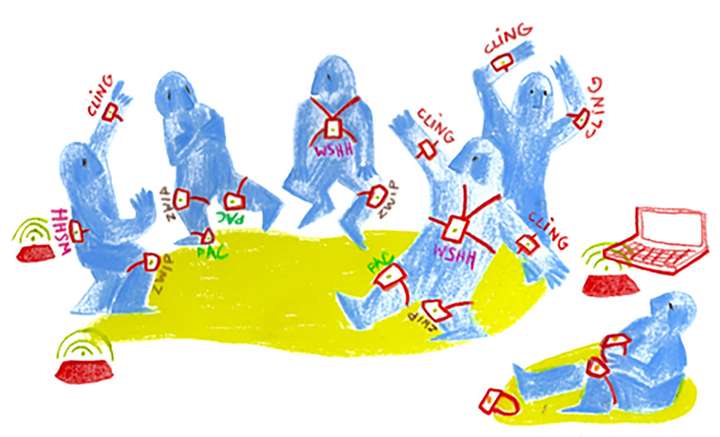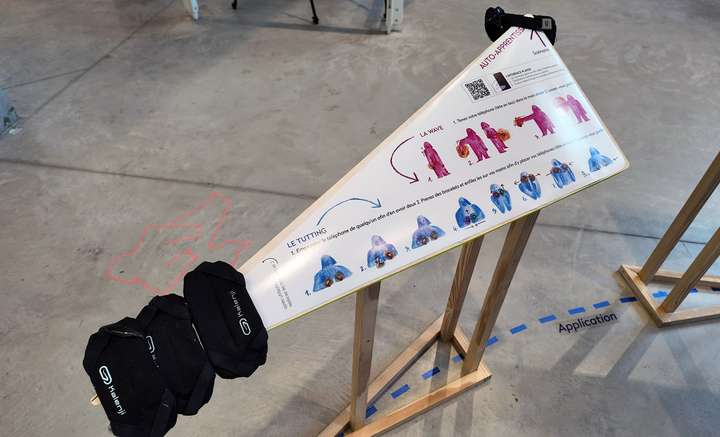M2 projects supervision - Research in Design
Teacher(s)
Stéphane Safin, Emilien Ghomi, Panos Mavros
Institution and classes
Recherche en design (ENS + ENSCI + Telecom Paris)
Number of students
6 students working on their final year projects, including research articles and the final exhibition
Duration and period
~15h or supervision for an article and ~15h for an exhibition
~20h for regular project reviews with the whole class during the year
Presentation of some productions
Ludivine Dargaud worked on the concept of customized "object-prostheses" and the design and manufacture of such artifacts
Context : working for an internship at the KapLab (CHU Liège), specialized in using new technologies to answer the needs of people with disabilities
Goal : to study, define, explore and develop participatory design and manufacturing practices to create "object-prostheses", helping people with disabilities to carry out vital tasks, communicate with their relatives, practice sports or just have fun
Position and proposition : Ludivine explored various ways to create such customized objects, all involving the requesters, to put the sense of care in the center of her work. People involved in such processes feel that the objects are made just for them, and with them, responding to their needs in the most pleasant and caring possible manner. For her exhibition, she proposes to consider behavioral disorders as "disabilities", and to question how it could look like to create customized "objects-prostheses" to ease such disorders (to support each other, feel contact when we don't like physical proximity, talk closely without smelling each others' breath, etc.). She used 3d printing, but also moulding and freehand modelling, as well as 3d scanning
Validation : Ludivine defined a design space to study the use and the design work made on objects created to help people with disabilities, taking into account all the ways to involve the requesters and the digital fabrication tools that can be used
Louise Grebel worked on designing interactive devices and software to both help dancers learn hip-hop moves, and augment hip-hop battles with digital means
Context : working for an internship at the ISMM team at IRCAM, specialized in designing and creating interactive devices for music and dance
Goal : using the CoMo system (embedded gesture sensor and classifier) from IRCAM in the context of hip-hop dancing, and adding new features for learning dance moves and augmenting battle events
Position and proposition : Louise worked on gesture classification and recognition, as well as continuous feedback and feedforward to inform dancers if they're reproducing the moves appropriately. For the "battle" case, she tested several situations, for example involving movements from the audience: when they like the current dancer, they move their arms to manifestate support, which is tracked by the gesture sensors, and makes the music play louder. For both cases, Louise also developped a "designer" mode for her system, where one can record gestures, associate audio feedbacks or effects.
Validation : Louise first run exploratory studies with questionnaires, exploring the ability of novice dancers to reproduce the hip-hop moves, and their perception of the support provided by her feedforward/feedback system for learning (effort, time, performance, frustration). She then tested several feedback conditions (several audio effects, and a "no feedback" condition). In another study, she tested the "designer" functionality
